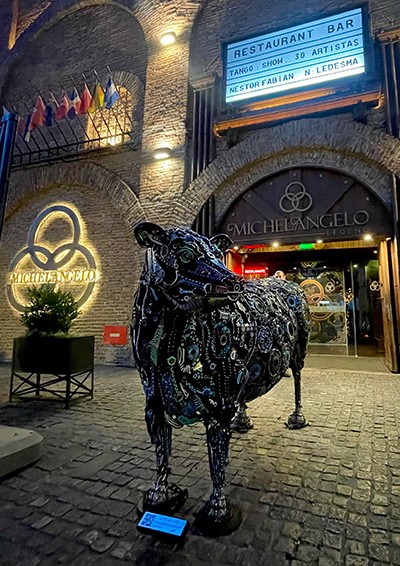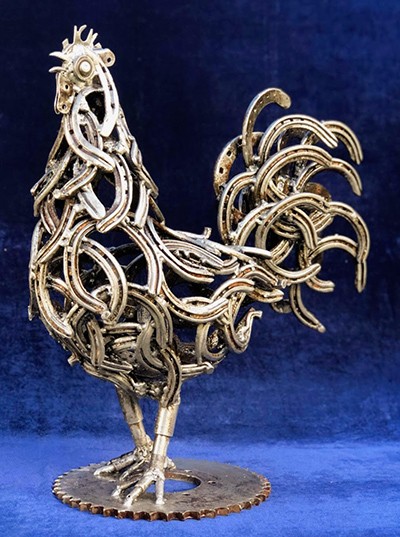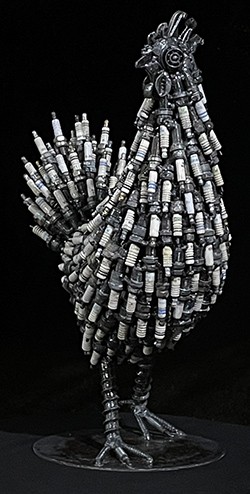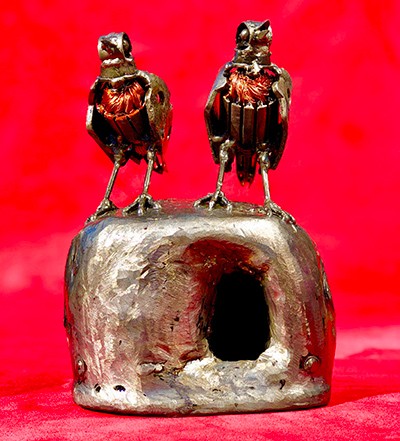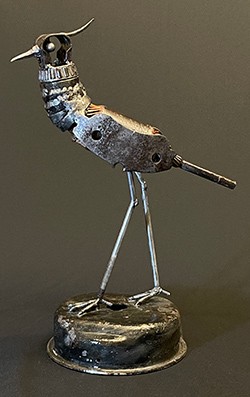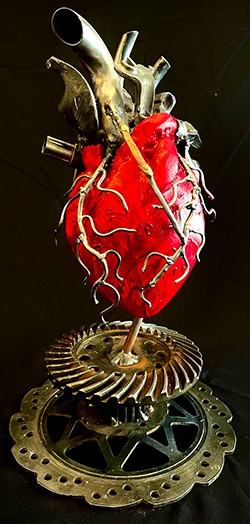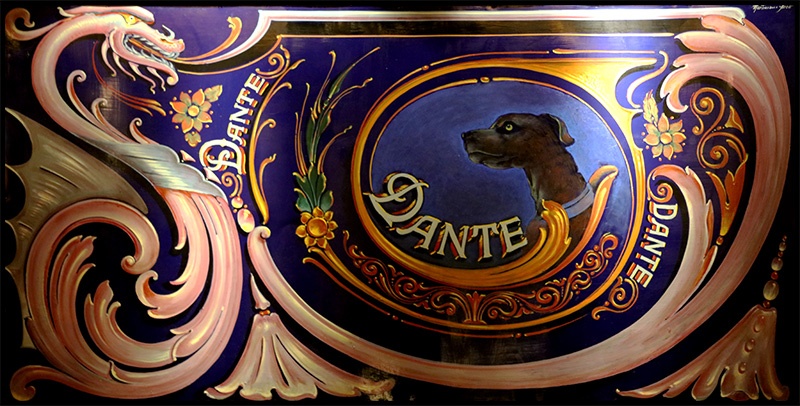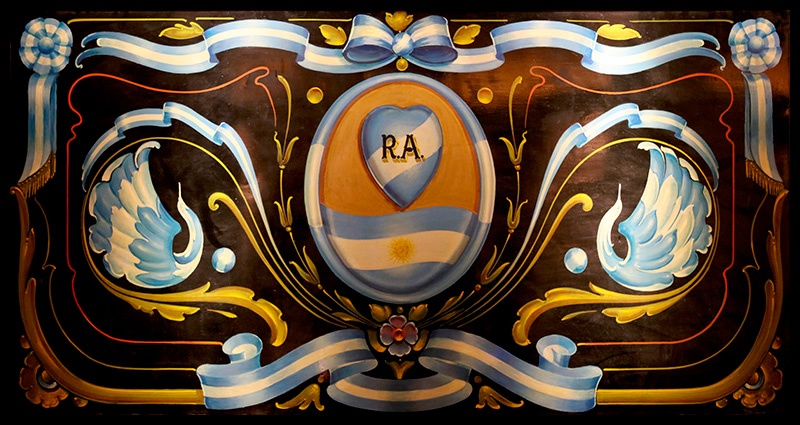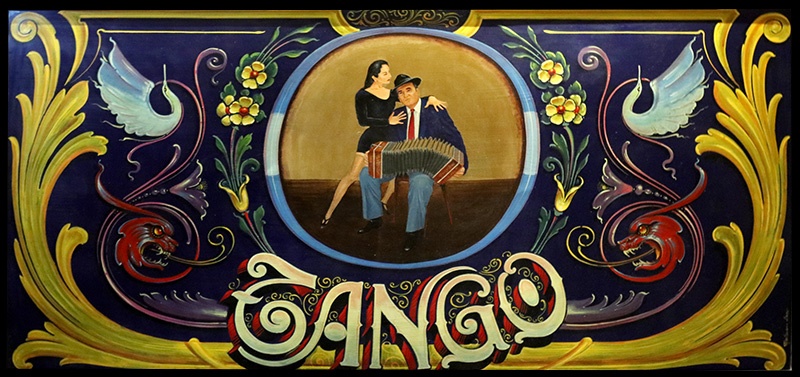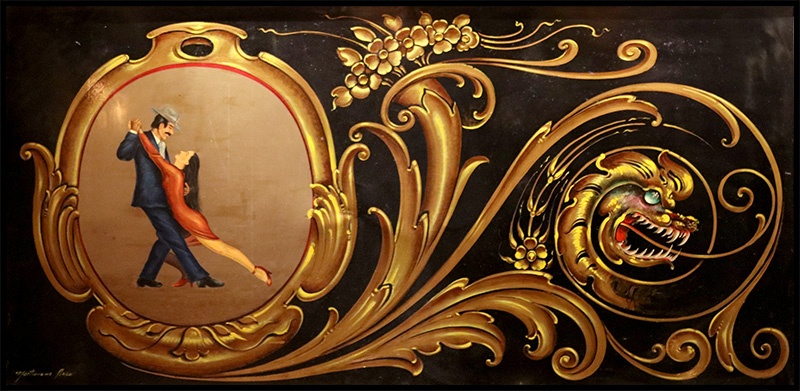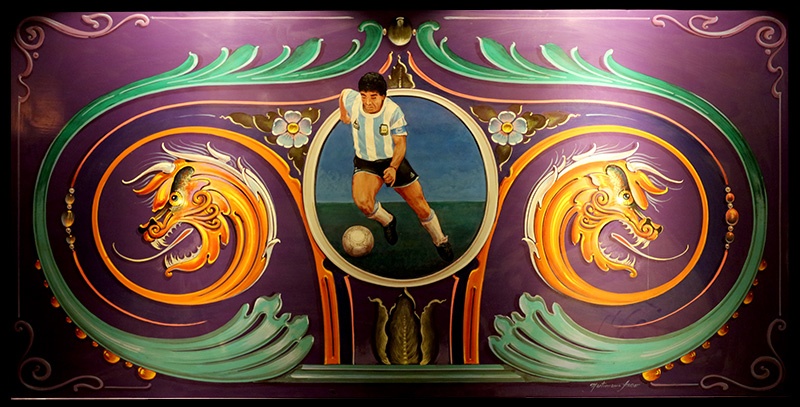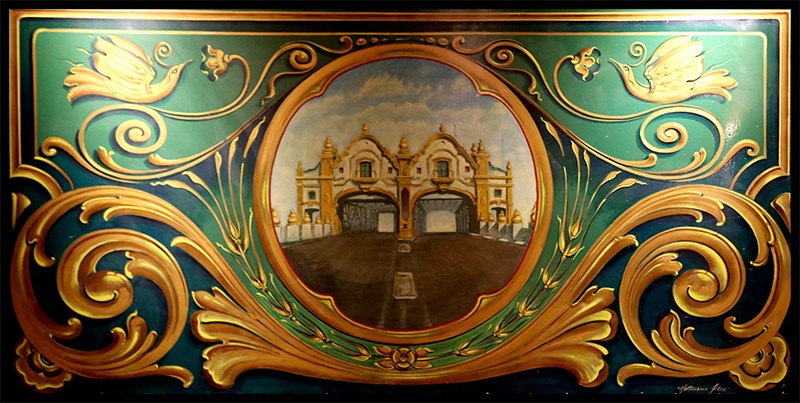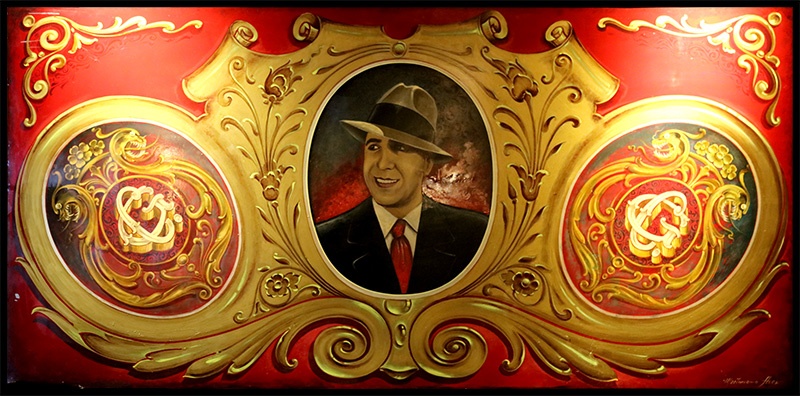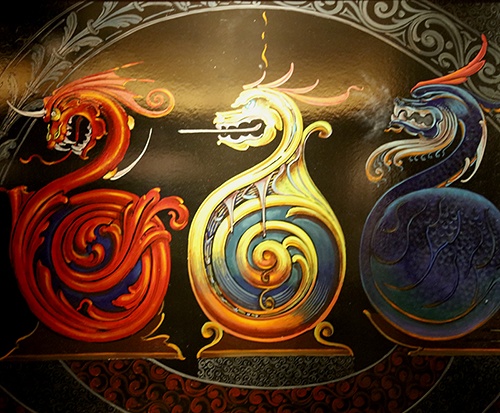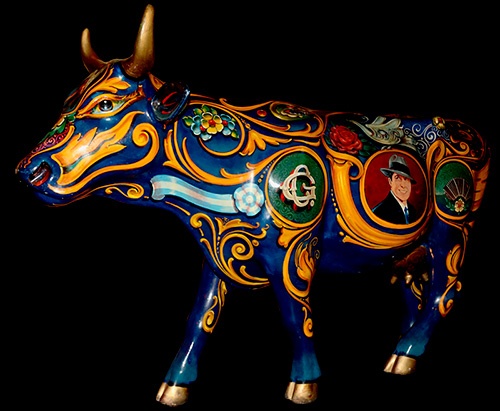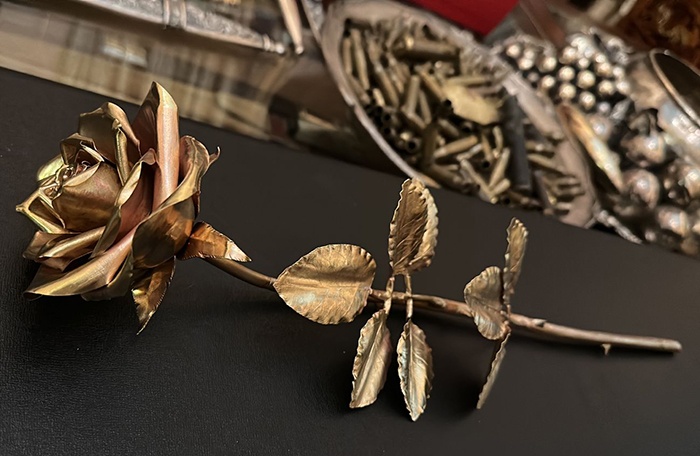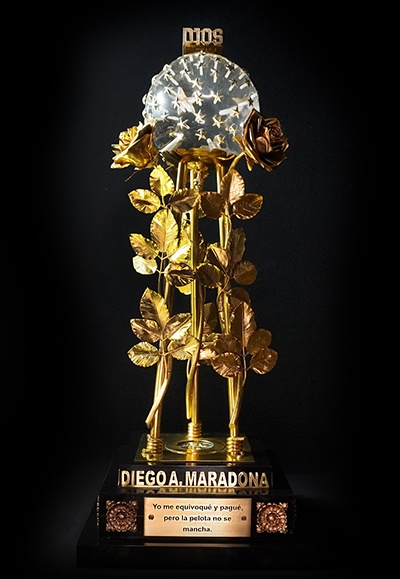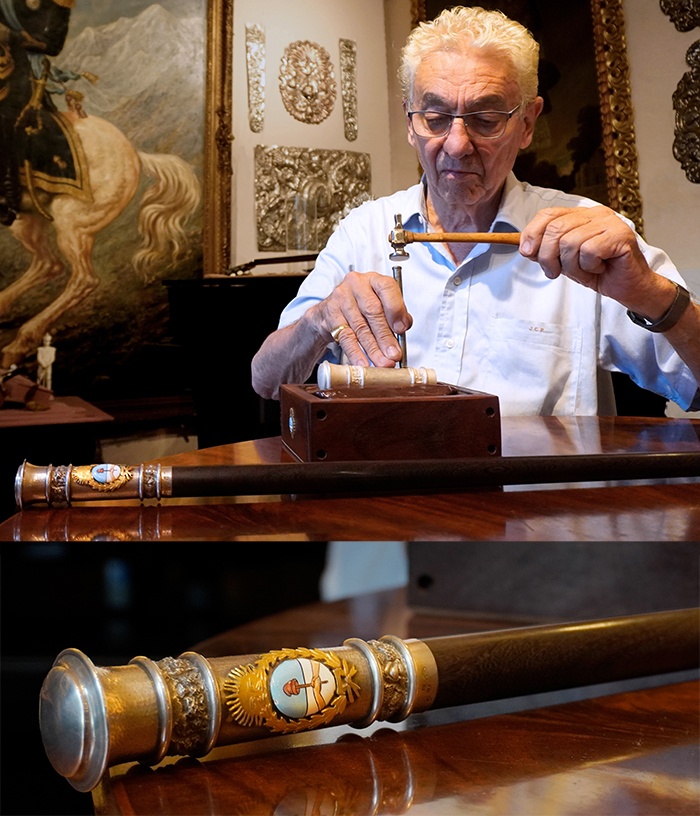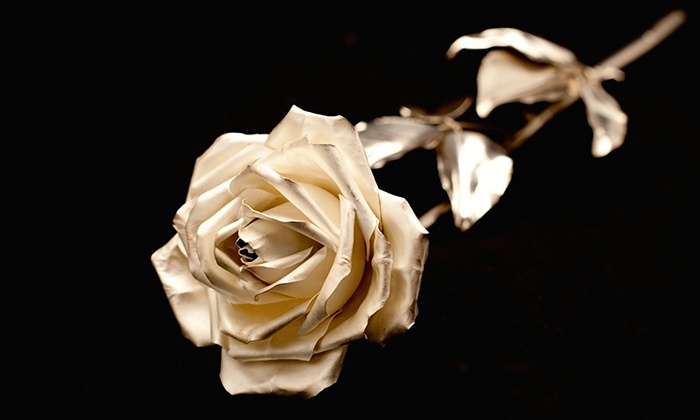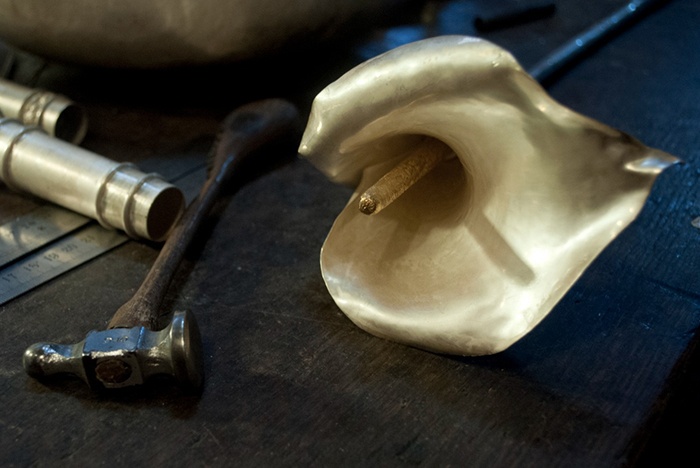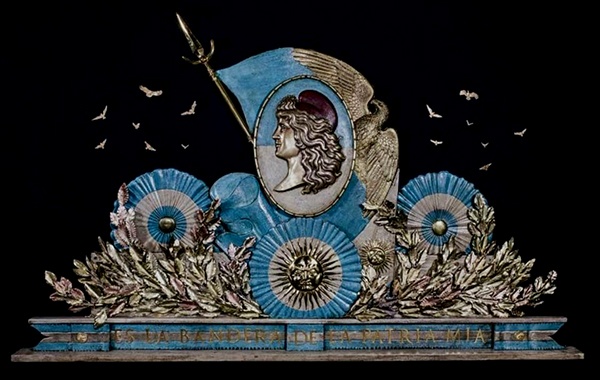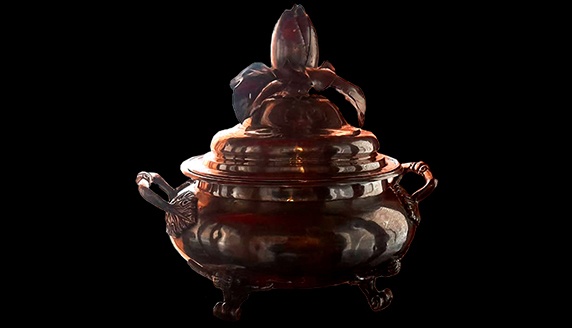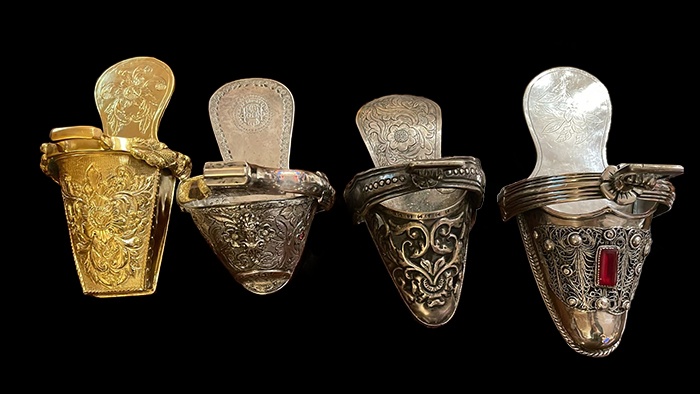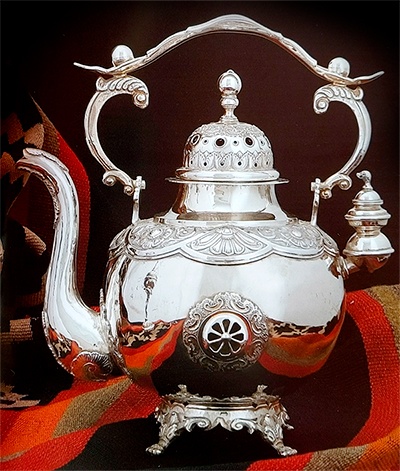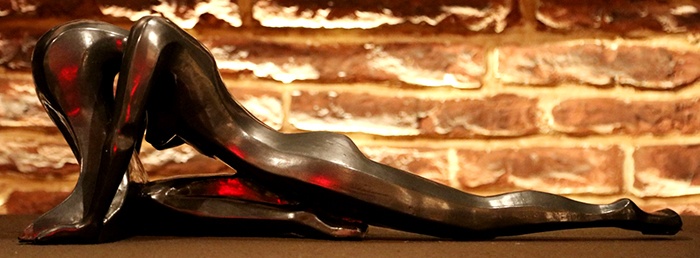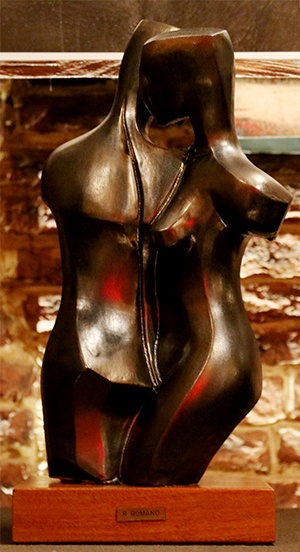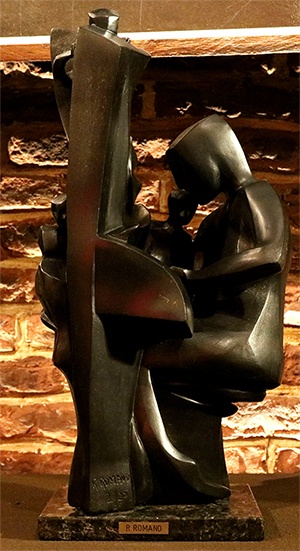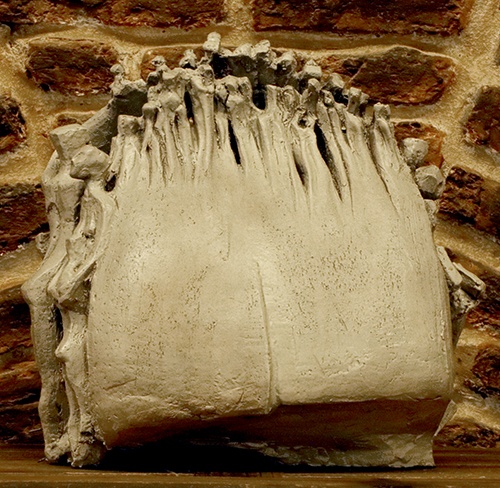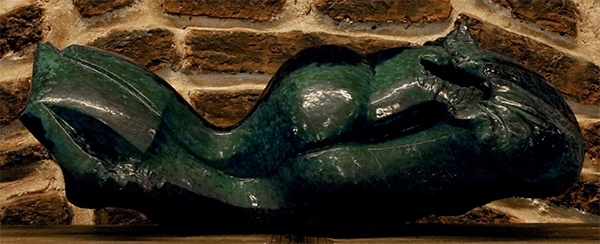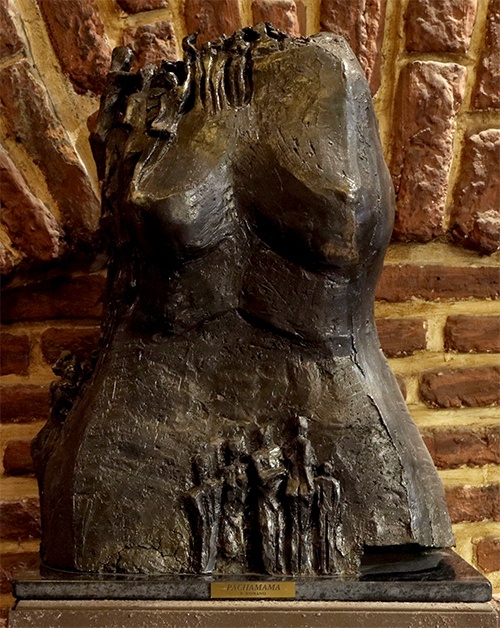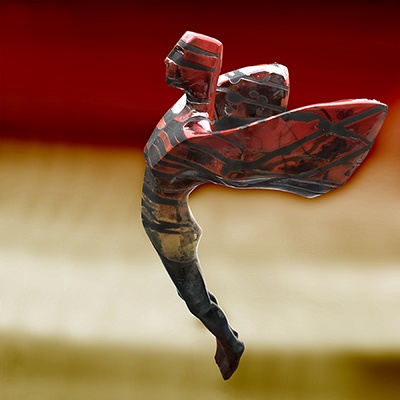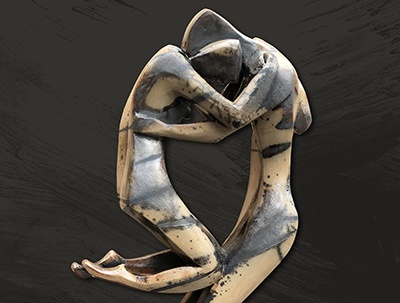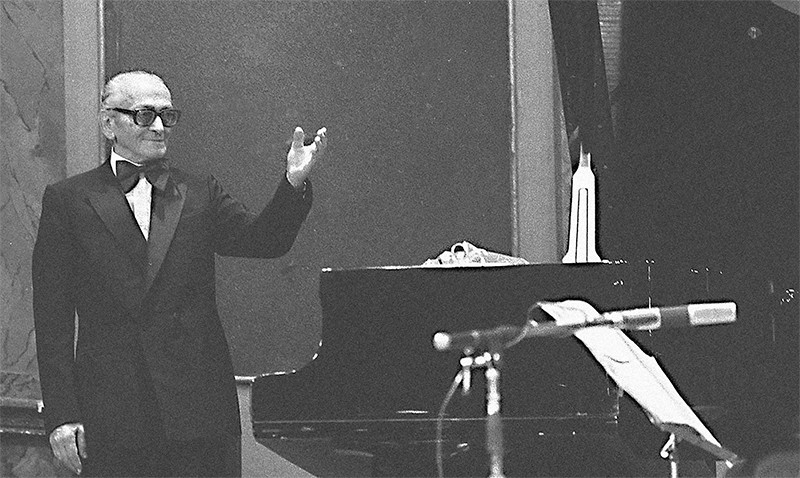Deplà
Born in Buenos Aires in 1971, Deplà is a master of reinvention. Self-taught and a traveler, his career is a journey that spans from paintbrushes to welding machines, with which he now brings to life metal animals with a soul. If I had to summarize him, he's the alchemist who turns rusty iron into galloping horses.
It all began in the Parisian workshops with sculptor Carlos Regazzoni between 1999 and 2002, where he learned that a piece of scrap can be more eloquent than a blank canvas. That experience shaped his style: works that breathe the rough character of iron, but with an unexpected elegance. His signature? Life-size horses that seem frozen in mid-motion, as if the metal had grown tired of being rigid.
His metallic bestiary: where recycling becomes art
Imagine a defiant bull at the gate of a historic site, now world-famous for its tango, gastronomy, and art shows ("ATRACÓN," 2024), or a shy pudú in the mountains of Cerro Chapelco (2019). This is how Deplà works: he takes his creatures to places where they dialogue with the landscape. His works inhabit racetracks, museums, and polo clubs from Mexico to France. The secret: he doesn't use blueprints. Each piece is born from the dialogue between his hands and the materials he salvages from fields, junkyards, and auto repair shops.
MARTINIANO ARCE
Plastic artist Self-taught filleter, he was born in the city of Buenos Aires on November 14, 1939.
Since 1971 he has exhibited his vast artistic work, representative of a popular and traditional pictorial art of Buenos Aires: Fileteado, which, like tango, mate, soccer and the Obelisk, is like a symbol of our cultural identity. In 2015 it was declared "Intangible Cultural Heritage of Humanity" by UNESCO.
He has had numerous individual and group exhibitions; His work appears in important museums and art galleries, acquired by private collections in the country and abroad. His career is disseminated in the main media: radio and television, national and foreign newspapers and current affairs magazines, having completed a golden wedding with art.
Invited by the famous master Antonio Berni to paint works together in 1977.
Invited in 1988 by the Argentine Embassy to exhibit his filletings and natures at the "Museon" in The Hague, Holland.
In 1997 he received the highest distinction of "Illustrious Citizen" of the City of Buenos Aires by the Honorable Buenos Aires Deliberative Council.
In 2006 his book "El Arte del Filete" was published, Ediciones Deldragón.
In 2007 the Honorable Chamber of Deputies of the Nation awarded him a diploma "in recognition of his prestigious career, embodied in the excellence of the art of Argentine filleting", exhibiting his work at the National Congress.
Also in 2007 - Decorated with the "Universal Academic Star" with the Rank of "Patricio de la Humanidad Solidaria" by the World Board of Presidents of the OMHS "World Work for Solidarity Humanity", being invested with the Band of Public Honor and registered his name in the World Registry of Values of the Human Kind.
In 2010-Summoned to participate with his art in the "Argentine Country Brand", in actions aimed at giving our country an identity in the world, through its traditional art of filleting and culture.
DANTE VS DRAGON
Technique: Oil on metal.
Measurements: 200 x 100 cm
The dragon represents what was the beginning of his life. Rescued from the street, suffering, almost unable to save himself.
Today Dante is a brave dog due to the great affection and love shown to him.
Cintas patrias
Technique: Oil on metal.
Date: 2004.
They are the celestial and white colors of the feeling that unite the Argentine hearts. In the Fileteado Porteño, it was customary to paint cockades, ribbons and flags, among other pictorial motifs, to highlight the feeling of nationality.
THE PAINTER AND THE DANCER
Technique: Oil on metal.
Date: 2004.
With the tango partner, evoking Pichuco with the legendary Buenos Aires bandoneon.
TANGO IN SAN TELMO
Technique: Oil on metal.
Date: 1996.
It is present with its fortress stamp.
MILONGA IN OBELISK
Technique: Oil on metal.
Date: 2004.
Emblematic site of my city, "Mi Buenos Aires Querido"
FOOTBALL AND DIEGO
Technique: Oil on metal.
Date: 2004.
Remembering Maradona idol, who gave us so many congratulations.
OLD ALSINA BRIDGE
Technique: Oil on metal.
Date: 2004.
If you have seen me cross this bridge so many times in my childhood going to school, the traditional place of the suburban milonga.
GARDEL: THE MOROCHO OF ABASTO
Technique: Oil on metal.
Date: 2004.
Gardel, the greatest singer of Argentine Tango, deserves the portrait and the place that "Michelangelo" exposes.
MELODY
Technique: Oil on wood.
Closes: 2020.
The flowers and the birds represent the Buenos Aires sentimentalism in the pictorial style of the fillet, and they are always present with their profusion of ornaments and colors.
TRILOGÍA DE DRAGONES
Technique: Oil on metal.
They are linked in a generation, they represent the youth, maturity and old age of these mythical beings.
TANGO EN MONTSERRAT
Technique: Oil on wood.
Closes: 1996
It is present with its imprint of strength.
FILETEADA COW “LA PORTEÑA”
Technique: Made with synthetic paints and oil finishes.
Year 2007.
Material: Made with fiberglass and acrylic resin.
Scale: 1:1.
Exhibitions:
- Hall of Lost Steps of the H. Chamber of Deputies of the National Congress.
- Great Masters Art Gallery and House of Culture Municipality of Vicente López.
- Similar to the painted cow for the open-air expo “CowParade” where it reached the maximum auction limit for the benefit of public hospitals.
DRAGÓN EN LOS TÚNELES DE SAN TELMO
Technique: Oil on metal.
Dragons usually inhabit mythical and inaccessible places. They hide in the domes of temples, towers of castles and palaces and in San Telmo they prowl the historic corridors of the colonial tunnels that still remain in our traditional neighborhood.
Juan Carlos Pallarols is an internationally renowned Argentine silversmith. He has made pieces of great aesthetic, technical and historical value, such as the Command Batons of various Argentine presidents, official gifts commissioned by different leaders, and special works for companies and organizations and even papal chalices.
Dos rosas por la paz
We could say that it is a great collective work, like the ones I like to undertake. A space for reflection on our past and a look of light on our future. Dos Rosas proposes a meeting path; And although I was inspired by a story that happened in the Malvinas, with this work I want to be an instrument to promote peace throughout the world. I would like these two roses to be forever the symbol of the agreement between two, of the union between two. The basis of any agreement begins with a union between parties.
With war material from the 1982 war and the conflict between the Argentines and the British, and together with all those who come to participate, we are making two metal roses, whose final objective is to take them as an offering to those who fell in combat they rest in the cemeteries of the South Atlantic Islands. The relative of a fallen Argentine will bring one of the roses to the fallen British and in turn, the relative of a fallen British will bring the other offering to the fallen Argentines.
Escudo Nacional
Technique: Forged and glazed in bronze with craquelé enamel.
Author: Juan Carlos Pallarols
Trofeo Homenaje a Diego A. Maradona
Technique: Made in reconstituted bronze of Malvinas war material, it has a reliquary with soil from his birthplace and crystal acrylic.
Author: Juan Carlos Pallarols.
Bastón de Mando Presidencial
Technique: Handle and spike in 925,000 silver with two guards of thistle flowers, enameled national coat of arms, surrounded by golden laurels. Urunday wooden rod.
Author: Juan Carlos Pallarols
Rosa Máxima
Silver rose inspired by the vitality and beauty of Queen Máxima of the Netherlands.
Author: Juan Carlos Pallarols.
Rosa Lady Di
Rose with 925,000 silver stem and golden flower made in homage to Princess Diana.
Author: Juan Carlos Pallarols
Cala
Cala made of 925,000 silver and a golden center.
Author: Juan Carlos Pallarols.
Escudo Nacional 1813
National coat of arms made of bronze, silver, gold and enamel.
Author: Juan Carlos Pallarols.
Rosa por la paz
Rose forged with remnants of Hercules aircraft used in the Falklands War of 1982.
Author: Juan Carlos Pallarols
This work is part of a series of roses with similar characteristics that pay tribute to our Malvinas heroes, ex-combatants, fallen and family members. The first in this series are found in the Buenos Aires town of Gonzales Chavez.
Sopera Magnolia
Hand forged silver tureen. At the top of its lid it has a Magnolia.
Author: Juan Carlos Pallarols
Estribos De Amazona
Forged and chiseled silver stirrups.
Author: Juan Carlos Pallarols.
Calco Sable Corvo del Gral. San Martin
Description: Exact copy of the Corvo Saber of Gral. San Martin, made from the original, with steel blade, bronze hilt and toe, wooden and leather body.
Author: Juan Carlos Pallarols
Mate Selección
Gourd, leather and silver mate, made especially for the players of the Argentine Soccer Team, on the occasion of the 2022 World Championship.
Author: Juan Carlos Pallarols
Pava de Hornillo
Stove kettle forged and chiseled in silver.
Author: Juan Carlos Pallarols.
Cabezada de caballo
Made in silver with gold details.
Author: Juan Carlos Pallarols
ROSARIO ROMANO
Graduated in Fine Arts, Ceramist, Sculptor and Teacher in the area of Fire Arts at the Faculty of Arts of Uruguay – UDELAR. She has an extensive track record at national and international level, repeatedly exhibiting her work in Florence, Pisa, Soho in New York, Costa Azul in France. She is appointed art curator by the BID.
Saludo al sol
Técnica: Gres
Escultura cerámica realizada en gres, con vidriado de múltiples óxidos metálicos.
Preludio
Technique: Stoneware
Ceramic sculpture made of stoneware with metallic oxides and enamels.
Tardes de piano
Technique: Stoneware
Ceramic sculpture made of stoneware with satin glaze of multiple oxides.
Vientre
Technique: Stoneware
Ceramic sculpture made of stoneware, glazed with feldspathic glaze and metallic oxide patina.
Sirena
Technique: Ceramic.
Description: Ceramic sculpture. glazed with overlapping enamels and oxides.
Tango
Technique: Ceramic.
Ceramic sculpture. glazed with overlapping enamels and oxides.
Sagrada Familia
Technique: Raku
Ceramic sculpture made with the ancient oriental technique called raku. Reduction of metal oxides, mainly copper.
Donna nell´mare
Technique: Ceramic
Description: Ceramic sculpture made with alkaline glazes and superimposition of oxides.
Pachamama
Technique: Ceramic
Description: Ceramic sculpture with reliefs, made with chamotte paste, glazed with saturation of metallic oxides.
Unique piece.
Icaro
Technique: Raku
Description: Ceramic sculpture made with the ancient oriental technique called raku. Glazed in gradient colors and reserving areas for smoking.
h. 45cm
Numbered limited series
El salto
Technique: Raku
Ceramic sculpture made with the ancient oriental technique called raku. With reserves for smoke and alkaline glazes.
h. 45cm
Numbered limited series
OSVALDO PUGLIESE
Original piano bow by Osvalo Pugliese
He was born on December 2, 1905 in the Buenos Aires neighborhood of Villa Crespo, into a family of musicians. His father, Adolfo Pugliese, played the flute in neighborhood ensembles, mainly in quartets.
Balcarce 433, C1064 Cdad. Autónoma de Buenos Aires
THEATER
MONDAY TO SATURDAY
Dinner: 07:00 PM / SHOW: 9:00 PM
RESTAURANT & BAR
MONDAY TO SATURDAY from 07:00 PM to 12:00 AM HS
BOOKINGS
FOLLOW IN
Our Tango & Folklore Show is much more than a show: it is an emotional journey through the music and passion that transcends our country. With live orchestra, singers that transmit the soul of tango and dancers that shine in every moment. In Michelangelo you will live a complete experience where Argentine cuisine, tango and folklore come together in one night to be part of the culture that makes the world fall in love.
Michelangelo Legend in the heart of San Telmo, has a unique restaurant called 433 in its main hall. A space where history, gastronomic tradition and Argentine culture come together in our emblematic building declared cultural heritage.
Our menu is a tribute to the flavors that define Argentine cuisine: juicy chorizo steak, steak eye to the perfect point, freshly baked empanadas, melted provoleta, homemade Italian pastas and desserts that evoke the Porteño family tradition.
Each dish tells a story and reflects decades of culinary experience of our families. If you are looking for the genuine Argentinean restaurant experience, 433 in San Telmo, Buenos Aires, this is the place for you.
Our bar named Dante, named after our beloved mascot, is located on the second floor of Balcarce 433. Our bartender will surprise you with a wide variety of signature drinks, cocktails, whiskies, wines and an ideal menu to accompany your favorite drink with savory and sweet dishes. A place where you can enjoy a unique space for its style and ambience.

